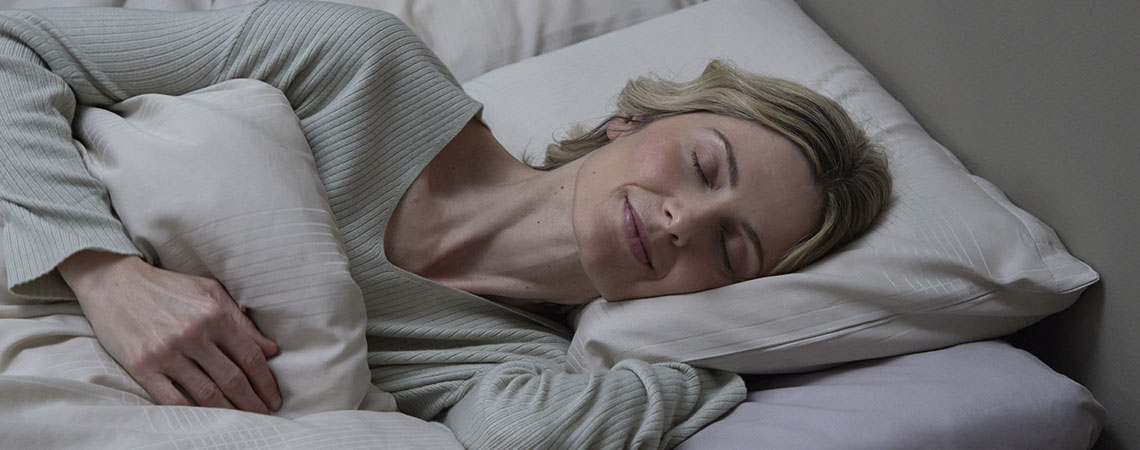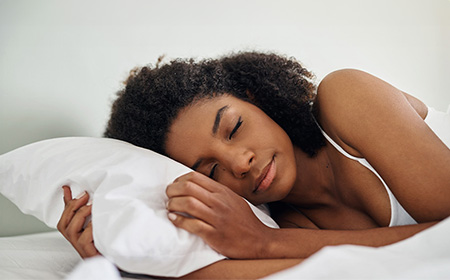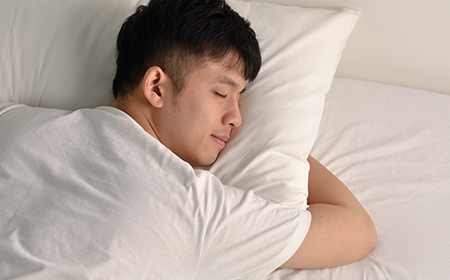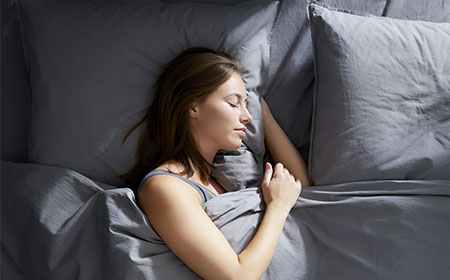There are plenty of advice when it comes to your sleeping position. Some believe that it is better to be a side sleeper than a back sleeper. Others say the opposite. Few recommend sleeping on the stomach. However, if you have no sleep related physical problems, and you don’t disturb your partner with your snoring, there is no reason to force yourself into a changed sleeping position.
If on the other hand, you do have neck pain or your partner is losing sleep over your noise, there are things that you can do to change sleep position and hopefully solve the problem.
Our best tips to change sleep position
To begin with, you should aim to fall asleep in your desired sleep position. What happens during your sleep can be difficult to control, but there are some tricks that you can use:
You want to be a side sleeper:
- Attach a physical object to the back and the front of your pajama top to prevent yourself from sleeping on the back or on the stomach. Some people recommend a tennis ball, but it can be anything, that is uncomfortable to lie on, and that can easily be removed again.
- Make sure that you have the right pillow for sleeping on your side. It should be medium to high in order to fill out the gap between your head and your shoulders and keep your neck and your spine in a straight line.
- Make sure that you have the right mattress for sleeping on your side. It should be soft enough for your shoulders and your hips to sink in and let your spine stay in a straight line.
- Make it extra comfy to sleep on the side. Get a knee pillow, that relieves stress on your hips and lower back.
- Arrange pillows around your body to make a barrier that makes it more difficult to turn to your back or your stomach.
You want to be a back sleeper:
- Attach a physical object to the front of your pajama top to prevent yourself from sleeping on the stomach. Some people recommend a tennis ball, but it can be anything, that is uncomfortable to lie on, and that can easily be removed again.
- Make sure that you have the right pillow for sleeping on your back. It should be low in order to keep your neck and spine in a straight line.
- Make sure that you have the right mattress for your sleeping on your back. It should be medium to firm to support your lower back and neck and keep your shoulders and hips from sinking into the mattress.
- Get an extra pillow to place under your knees to reduce pressure on your spine and keep it aligned.
- Create a barrier of pillows on either side of you to stop yourself from turning to your side or your stomach.
- Raise your upper body, either by elevating the head of your adjustable bed, if you have one, or by placing pillows under your back, neck and head.
- Use a sleep mask. When you cannot turn away from the light, a sleep mask can help you create darkness.
Be careful that you don’t lower your sleep quality over time using any of these methods. You don’t want to wake up exhausted in the morning after a night of disrupted sleep.
If you experience trouble sleeping for a longer period, it is important that you consult a doctor to find a solution. A doctor can make a diagnosis and treat medical conditions. Always consult your doctor before making any changes if you are pregnant or have any health issues.
Read more about your sleeping position and your personality
Changing sleep position isn’t easy
It can take time to change a habit and you must be prepared that it is very difficult to control your movements during sleep. We all change sleeping positions – some say up to 40 times each night, so even if you fall asleep in one position, you will probably wake up in another.
You must let yourself be guided by how you feel when you wake up. Is the neck pain gone or has it lessened? Did your partner get a good night’s sleep? Do you wake up and feel well rested? Those are signs that you are succeeding in changing your sleep position and improving your sleep.




